National Honey Bee Day
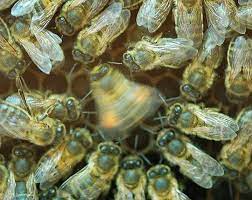 Happy National Honey Bee Day! Occurring on the third Saturday of August each year, National Honey Bee Day celebrates honey bees, beekeeping, and beekeepers. Bees are a crucial member of local ecosystems and pollinate 80% of the world’s plants, including 90 unique food crops. Honey bees who have found vital food sources will come back to the hive and preform a ‘waggle dance’ signaling the direction and amount of food available. The closer the food and the more food there is the more ‘waggle’ there shall be! The bees with the best waggle are deemed the ‘winners’ and their food source will be harvested first – imagine having dance offs to decide your dinner location.
Happy National Honey Bee Day! Occurring on the third Saturday of August each year, National Honey Bee Day celebrates honey bees, beekeeping, and beekeepers. Bees are a crucial member of local ecosystems and pollinate 80% of the world’s plants, including 90 unique food crops. Honey bees who have found vital food sources will come back to the hive and preform a ‘waggle dance’ signaling the direction and amount of food available. The closer the food and the more food there is the more ‘waggle’ there shall be! The bees with the best waggle are deemed the ‘winners’ and their food source will be harvested first – imagine having dance offs to decide your dinner location.
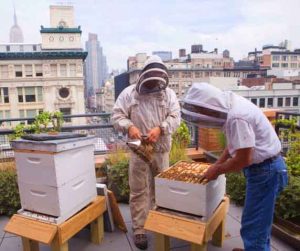 With over 16,000 people employed across beekeeping, beekeepers and other workers are necessary to the survival and future of honey bees and the various plants they pollinate. Colony Collapse Disorder, or CCD, has led to half of the world’s honey bee colonies disappearing since the 1940s. We can help honey bee populations by planting native backyard gardens with some of their favorite flowers and plants, such as rough aster. Urban beekeeping and the beekeeping community have been able to help urban honey bee populations by providing re-homing for unwanted bees, urban hive havens, and community bee yards.
With over 16,000 people employed across beekeeping, beekeepers and other workers are necessary to the survival and future of honey bees and the various plants they pollinate. Colony Collapse Disorder, or CCD, has led to half of the world’s honey bee colonies disappearing since the 1940s. We can help honey bee populations by planting native backyard gardens with some of their favorite flowers and plants, such as rough aster. Urban beekeeping and the beekeeping community have been able to help urban honey bee populations by providing re-homing for unwanted bees, urban hive havens, and community bee yards.
Recognizing Our Honey Bees
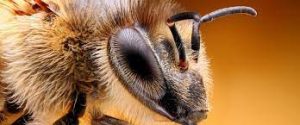 Buzz, buzz, buzz! Though there are over 20,000 known bee species and over 4,000 natives to the United States, honey bees are recognizable by their warm amber-brown body color, striped abdomens, and heart-shaped faces. Honey bees have two unique forms of identification not found in most other bees – large hairy compound eyes and the lack of tibial spurs. Hairy compound eyes large enough to see with a lens or phone camera aid honey bees allows for enhanced vision. Next time you see a bee you think might be a honey bee, try to use your phone’s camera to check out the eyes! The lack of tibial spurs (spurs on the hind legs to assist in digging) typical of nearly every other bee species is due to their housing in wax comb homes instead of holes in the ground or various cavities.
Buzz, buzz, buzz! Though there are over 20,000 known bee species and over 4,000 natives to the United States, honey bees are recognizable by their warm amber-brown body color, striped abdomens, and heart-shaped faces. Honey bees have two unique forms of identification not found in most other bees – large hairy compound eyes and the lack of tibial spurs. Hairy compound eyes large enough to see with a lens or phone camera aid honey bees allows for enhanced vision. Next time you see a bee you think might be a honey bee, try to use your phone’s camera to check out the eyes! The lack of tibial spurs (spurs on the hind legs to assist in digging) typical of nearly every other bee species is due to their housing in wax comb homes instead of holes in the ground or various cavities.
The Life of an Honey Bee
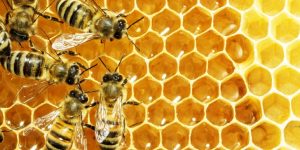 A honey bee hive, consistent of a hexagonal wax cells forming a comb, houses three types of bees – the queen bee, drone bees, and worker bees. The queen bee lives between three to four years and can lay up to 1,500 eggs a day, with her sole purpose to lay eggs which will become either worker or drone bees. Worker bees – the workhorses of the honeycomb – are non-reproductive females responsible for all tasks other than mating with the queen or laying eggs: gathering nectar, guarding the hive, caring for the queen and all larvae, cleaning and maintaining the hive, and producing and storing honey in the honeycombs. These bees will usually leave the hive around 15 times per day and visit upward of 1,500 flowers a day! Drone bees are only males and primarily exist to mate with the queen bee. These drone bees do not have stingers and never leave the hive to collect nectar and pollen. Unlike drone bees, female worker bees have stingers which provide additional self-defense when foraging or defending the hive. Though it is true honey bees will often die after stinging a human, this is only due to our softer and fleshier skin as mammals! Less than 1% of the human population is estimated to have a severe reaction to honey bee stings – what a stingingly-low number!
A honey bee hive, consistent of a hexagonal wax cells forming a comb, houses three types of bees – the queen bee, drone bees, and worker bees. The queen bee lives between three to four years and can lay up to 1,500 eggs a day, with her sole purpose to lay eggs which will become either worker or drone bees. Worker bees – the workhorses of the honeycomb – are non-reproductive females responsible for all tasks other than mating with the queen or laying eggs: gathering nectar, guarding the hive, caring for the queen and all larvae, cleaning and maintaining the hive, and producing and storing honey in the honeycombs. These bees will usually leave the hive around 15 times per day and visit upward of 1,500 flowers a day! Drone bees are only males and primarily exist to mate with the queen bee. These drone bees do not have stingers and never leave the hive to collect nectar and pollen. Unlike drone bees, female worker bees have stingers which provide additional self-defense when foraging or defending the hive. Though it is true honey bees will often die after stinging a human, this is only due to our softer and fleshier skin as mammals! Less than 1% of the human population is estimated to have a severe reaction to honey bee stings – what a stingingly-low number!
Keeping Our Honey Sweet
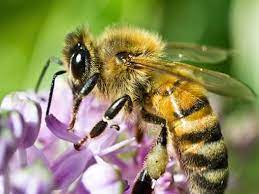 National Honey Bee Day is about recognizing the problems honey bees face while honoring those who keep and manage honey bee populations. Honey bees have been crucial to the survival crops and the animals which on rely on them, including us! In fact, the first alcoholic beverage ever made – mead – is made from the honey bees produce. Honey bees are hard workers and will fly up to 6 miles to gather nectar necessary for our crops and other plants! You can learn more about honey bees and National Honey Bee Day at honeylove.org, who currently manages National Honey Bee Day! You can show appreciation for our honey bees by planting native backyards and supporting beekeepers. Have a buzzin’ bee-autiful day!
National Honey Bee Day is about recognizing the problems honey bees face while honoring those who keep and manage honey bee populations. Honey bees have been crucial to the survival crops and the animals which on rely on them, including us! In fact, the first alcoholic beverage ever made – mead – is made from the honey bees produce. Honey bees are hard workers and will fly up to 6 miles to gather nectar necessary for our crops and other plants! You can learn more about honey bees and National Honey Bee Day at honeylove.org, who currently manages National Honey Bee Day! You can show appreciation for our honey bees by planting native backyards and supporting beekeepers. Have a buzzin’ bee-autiful day!
Written by Brandon Sullivan
Education Specialist
Lehigh Valley Zoo | Schnecksville, PA
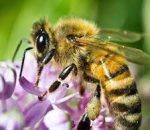

 It’s Lindbergh here and welcome to the barn owl habitat! I share this habitat with my son Soren, and it can be a bit difficult to tell us apart. Soren has lighter feathers, while I can usually be found in my favorite spot, on top of the nest box. If you take look at our faces, you may notice the feathers are shaped like a heart; this is not just for looks! It helps funnel sound towards our ears to help us hear even the slightest sounds. Our screeching call isn’t the prettiest, but it sure is effective for keeping other owls safe.
It’s Lindbergh here and welcome to the barn owl habitat! I share this habitat with my son Soren, and it can be a bit difficult to tell us apart. Soren has lighter feathers, while I can usually be found in my favorite spot, on top of the nest box. If you take look at our faces, you may notice the feathers are shaped like a heart; this is not just for looks! It helps funnel sound towards our ears to help us hear even the slightest sounds. Our screeching call isn’t the prettiest, but it sure is effective for keeping other owls safe. “Who cooks for you, who cooks for you all?” It’s Gordon here and this can be used to remember the barred owl’s distinctive call. My name stems from this reminder as I named after a popular chef that can sometimes be a little grumpy, just like me. I share my habitat with Marshmallow, a fellow barred owl. In the warm weather we are often misted with the hose to help us cool down. By the way, you don’t want us to cook for you, it will be a healthy serving of mice!
“Who cooks for you, who cooks for you all?” It’s Gordon here and this can be used to remember the barred owl’s distinctive call. My name stems from this reminder as I named after a popular chef that can sometimes be a little grumpy, just like me. I share my habitat with Marshmallow, a fellow barred owl. In the warm weather we are often misted with the hose to help us cool down. By the way, you don’t want us to cook for you, it will be a healthy serving of mice! Hi everyone, it’s your resident snowy owl at the LVZoo! My name is Yeti, which is perfect for my striking white feathers that, if I may say so myself, makes me one of the more handsome owls. As a juvenile I had black and white feathers, but as I grew up and matured, only my white feathers have stayed! Having LOTS of feathers to keep me warm causes me to be one of the heaviest owl species. In the summertime my keepers will set up misters and just like our barred owls, I enjoy sitting in the spray.
Hi everyone, it’s your resident snowy owl at the LVZoo! My name is Yeti, which is perfect for my striking white feathers that, if I may say so myself, makes me one of the more handsome owls. As a juvenile I had black and white feathers, but as I grew up and matured, only my white feathers have stayed! Having LOTS of feathers to keep me warm causes me to be one of the heaviest owl species. In the summertime my keepers will set up misters and just like our barred owls, I enjoy sitting in the spray.
